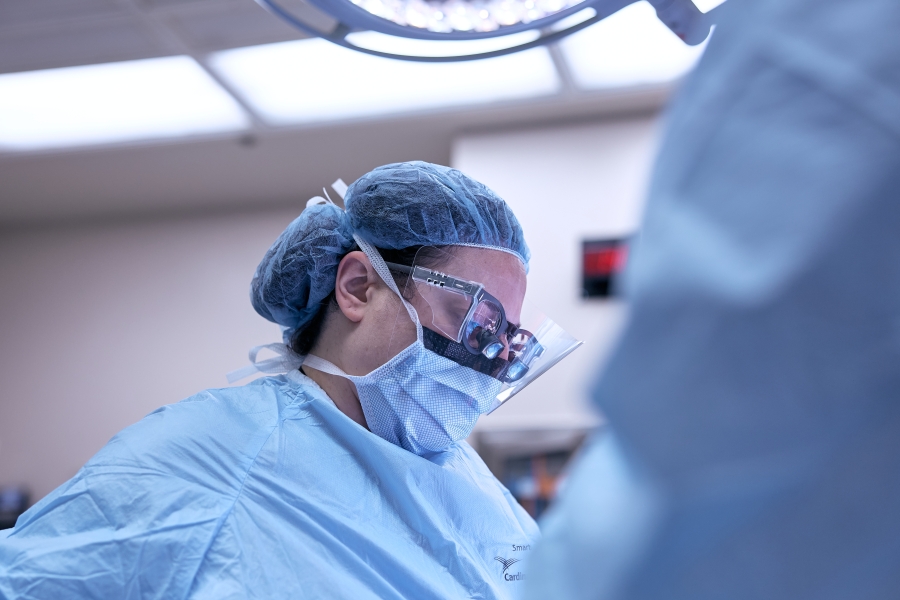Temple cardiovascular researchers are developing new therapies that may soon dramatically change how patients are treated after a heart attack or heart failure.
Steven R. Houser, PhD, is Director of the Cardiovascular Research Center, Senior Associate Dean of Research, and Chair of Physiology at the Lewis Katz School of Medicine at Temple University. He is also a former President of the American Heart Association.
Dr. Houser is on a mission to reverse heart damage, and his work is funded by over $25 million in research grants. But what drives him is deeply personal. Learn how his team’s cell-therapy approach can help hearts heal more normally.
Q: What motivates your research?
Dr. Houser: My dad — my buddy, my mentor and my coach in every sport — had a heart attack at 43. It left a large scar on his heart that eventually turned into a ventricular aneurysm, a thinning and ballooning of the heart wall. That led to heart rhythm problems, and eventually, heart failure. He died at 51.
I was in graduate school studying neuroscience, but his death set me on a new path. The path of the heart, you could say. Watching him die by degrees inspired me to study cardiovascular disease. There had to be something more we could do for people like my dad. I’ve been working on it for almost 40 years now.
Q: Can heart attacks be prevented?
Dr. Houser: Cardiovascular disease still claims a life about every 90 seconds today. That’s someone’s wife or dad or best friend. I study the consequences of a disease that is largely preventable. The Western lifestyle is practically designed to induce cardiovascular disease.
So, the first steps are really up to us — manage your blood pressure, control your cholesterol, control your blood sugar, stay active, eat a healthy diet, maintain a healthy weight, and maybe most importantly, don’t smoke.
I would happily give up my laboratory if we knew how to eliminate heart attacks, but we're not there yet. We should work harder and harder to reduce those risk factors that make people prone to these events. Then I think overall we'll do way better.
Q: What happens during a heart attack?
Dr. Houser: Most heart attacks are the result of coronary artery disease resulting in ischemia — poor blood supply to a portion of the heart. Heart muscle needs a constant supply of blood. The longer that heart muscle goes without blood, the more of it dies.
It’s essential to get to a hospital quickly so physicians can reopen blocked vessels to restore blood flow. Some of that muscle can be saved, but there’s always a part of the heart that will die and turn into scar tissue. Scarred muscle cannot contract. Now the heart is less efficient — sometimes performing so poorly that the patient develops heart failure. About 6 million people are living with heart failure in the U.S.
Q: What is Temple’s cardiovascular research doing to address heart disease?
Dr. Houser: The Holy Grail for ischemic heart disease researchers like me is to find a way to replace dead tissue with normal, functioning heart muscle. We're at the forefront of research in this area. We have many research teams here at Temple working to develop novel therapies that can better heal heart muscle after it's been damaged.
About 10 years ago I set out to look for a cell that could grow new muscle and blood vessels for the heart. We tested many cell types and found a cortical bone stem cell with properties that appear to enhance the repair of the heart after a heart attack. A real bonus is that these cells are easy to obtain and grow in the lab.
When these cells are injected into the heart tissue after injury, they modify the way the heart forms scar tissue. We're evaluating that in translational animal model experiments to try to see if we can come up with a simple way to give a patient treatment after they've had a heart attack that will improve the structure and function of their heart as it heals.
Our hope is that someday these cells might be used as standard therapy in hospital emergency rooms for heart attack patients.
Q: How close are you and your teams to developing a standard therapy for patients who have had a heart attack?
Dr. Houser: We've shown that the cell therapy that we're developing provides real benefit after heart attack in animal models — reduced scar size and improved function. That’s a promising, necessary step that sets the stage to test these therapies in patients who have suffered a heart attack.
Moving this research into clinical trials is the next step and will be a major transformation in heart disease treatment.

